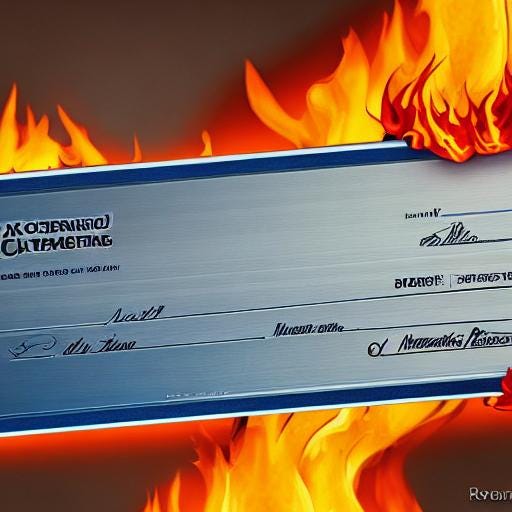Gradually, then suddenly
Cheques, the decline of the high street and what that tells us about technology adoption
Change is often like this Hemingway quote:
“How did you go bankrupt?” Bill asked.
“Two ways,” Mike said. “Gradually and then suddenly”
— Ernest Hemingway
I was reminded of this last week when a septuagenarian launched into a rant about why he had been sent a cheque. “They can take your money electronically,” he said. “So why can’t they give it back electronically?”
An excellent point. What surprised me was that the very same person was a late adopter of paying bills by direct debit and a reluctant user of online banking.
And yet, it demonstrates that we should never write off a demographic as being unable to adopt new technology. Perhaps, it is more accurate to think that the reasons to adopt it were just not compelling enough.
Technology Adoption is really about Jobs to be Done
Bob Moesta expands on this as part of the “Jobs to be Done” framework. For a longer read, follow this link: https://therewiredgroup.com/jobs-to-be-done/
The first two factors are perhaps the ones we think of:
- Push – wanting to make the situation better
- Pull – the attraction of a potential new solution
What we often forget to consider are:
- Habit – the tug of the “way we’ve always done things”
- Anxiety – the uncertainty of doing something new
The popularity in the software world for freemium and free trials is aimed at reducing anxiety and changing habits. It takes time to form new habits – free trials of 30 days or more reach this territory. Seven-day trials don’t.
Context is Everything
Overarching all technology adoption is context — the customer’s context, not the company’s. And context also changes gradually, then suddenly.
For example, in our example of the cheque, as bank branches close, it becomes more difficult to find and travel to a location to pay in a cheque. Even before those branches closed, changes in shopping habits perhaps mean there were fewer trips to the High Street. And then a task that was previously “popping into the bank” while there on another mission shifts to become the main task.
In the world of behavioural science, author James Clear (Atomic Habits) suggests if you want to meditate more, do it for a minute after your morning coffee1. BJ Fogg (Tiny Habits) built his strength by doing … wait for it … one press-up after every time he went for a pee.2 Yet another reason why a return to the office might not be for everyone.
But back to the argument at hand, what if the demise of the high street is a trigger for habit un-stacking (TM)? All of those tasks that were combined with other reasons to visit the high street are now orphans.
What more might we need to consider?
There’s an argument that breakthrough technologies start out inferior to the current way of doing things and need an additional source of value to overcome this inferiority.
Or as Douglas Adams might put it:
We are stuck with technology when what we actually want is just stuff that works
Let’s think of some examples. The MP3 was niche before the iPod. Clippy the Paperclip was a virtual assistant well before ChatGPT.
I’m providing a footnote to a research paper from 6 years ago that looked at this for electric vehicle adoption.3 For those of you unaccustomed to rummaging around in the footnotes, Bohnsack and Pinkse suggested three tactics:
- Compensating — for example, fast charging infrastructure was Tesla’s solution to address range anxiety
- Enhancing — auto firms have attempted to offer a service that temporarily granted customers to borrow a different car for a long-range journey
- Coupling — combining with other services, for example, electricity providers, home charge installation, solar panel installation
Amazon Prime Video is a great example of coupling TV streaming into a subscription for next-day delivery. Another example from the 1970s, American Airlines built Sabre a travel reservation system and listed its own flights at the top of the screen.
So what, now what?
For companies:
- Leaders should beware of habit un-stacking and its impact on the Moesta forces model.
- Monitor the weak signals of new entrants and early customer migration and prepare a response
- Look at building new business model components to enhance the value to the customer
For consumers:
- Don’t stick with frustrating experiences, look for low-risk ways of trying new alternatives
- And stop writing cheques your buddy can’t cash!

Until next time!